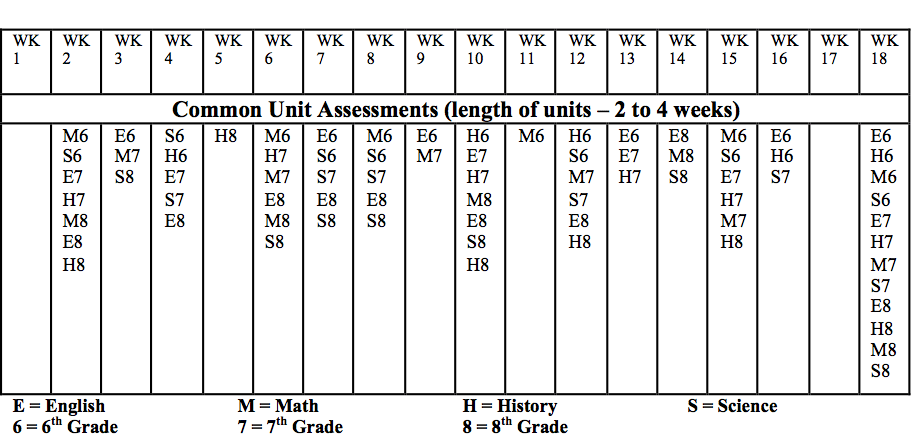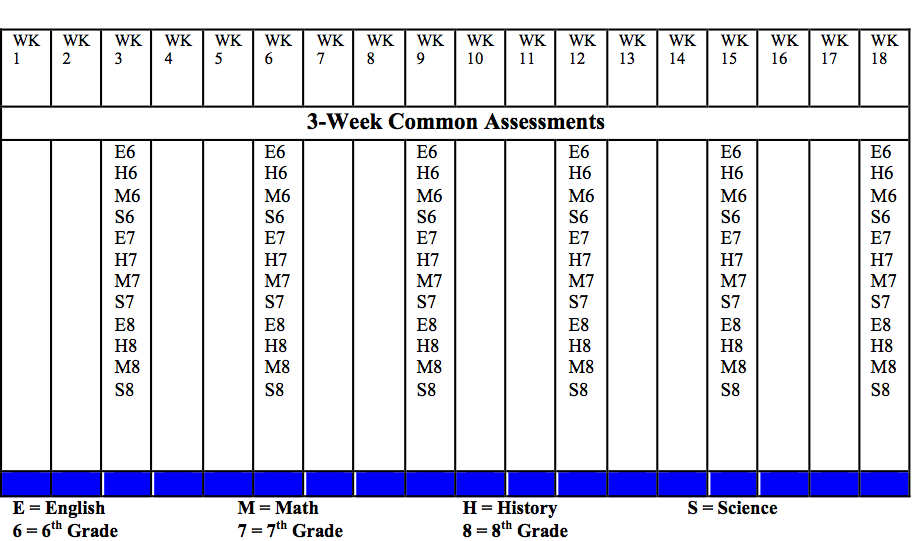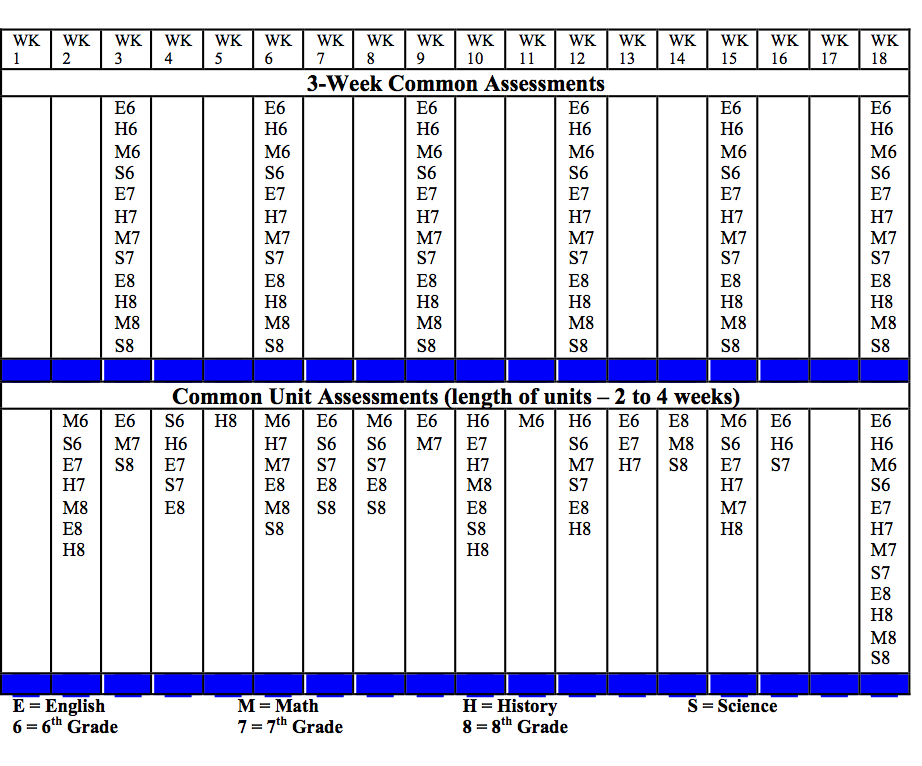The purpose of structure is to provide stability and predictability. This is how you excel in chaotic environments. This is how to set up organizations move effectively and efficiently at scale. This is how you leverage effort and brainpower, the currency of learning organizations.
This is what we do not do, with reckless abandon, in schools today. I’ll illustrate this with an all too common example, the implementation of common assessments. Here we have the classic conflict of theoretician vs. practitioner.
In this case the theoreticians are the curriculum designers and experts. These people think in terms of units of knowledge, which is entirely logical and appropriate. When you think in terms of units of knowledge, it makes a predictable impact on how one views assessment. Obviously, the assessment should occur at the end of the unit. But almost immediately, this adds complexity to an already fluid and dynamic operational environment. This is because units of knowledge vary in length. And the varying lengths are inconsistent across both grade level and content.
So consider the testing impact of common unit assessments (unit lengths from 2 to 4 weeks) in an all too typical middle school.
What you end up having is multiple tests occurring every week with no particular pattern. Now try to calendar and manage data meetings, instructional planning meetings, intervention meetings and staffings. It cannot be done efficiently. And if it cannot be done efficiently it will not be done effectively. And who will suffer? Students, teachers and campus administrators, but not the theoretician.
So what is the solution? In this case, listen to the practitioners. Here the practitioner institutes arbitrary structure to curricular chaos with the three-week common assessment. The units remain their same random length, but the assessments all occur at the same 3-week interval. Now this does mean that most assessments will have a mix of the end of the prior unit and the beginning of the current unit, but as long as the curriculum is mapped and paced, this presents no significant problem. (Note: If your curriculum is not mapped and paced, leadership and the curriculum department has failed the instructional staff. No spinning… Failed.) So lets look at the footprint of three-week assessments.
In this environment, the campus can calendar and manage data meetings, instructional planning meetings, intervention meetings and staffing quite efficiently. With efficiency comes effectiveness. And over time, with efficiency and effectiveness there is a fighting chance to build expertise.
Not to belabor the point, but this is important. Look at the two assessment calendars next to each other. Which one makes sense and which one is currently in effect in your district and on your campus?
Think. Work. Achieve. Your turn…
- Call Jo at (832) 477-LEAD to order your campus set of “The Fundamental 5: The Formula for Quality Instruction.” Individual copies available on Amazon.com! http://tinyurl.com/Fundamental5
- Call Jo at (832) 477-LEAD to order your campus set of “Look at Me: A Cautionary School Leadership Tale” Individual copies available on Amazon.com! http://tinyurl.com/lookatmebook
- Now at the Apple App Store: Fun 5 Plans (Fundamental 5 Lesson Plan Tool); PW Lite (Basic PowerWalks Tool); PW Pro (Mid-level PowerWalks Tool)
- Upcoming Presentations: TASSP Summer Conference (Multiple Presentations); NEASP National Conference; The Fundamental 5 National Summit (Keynote Presentation)
- Follow Sean Cain and LYS on www.Twitter.com/LYSNation and like Lead Your School on Facebook




